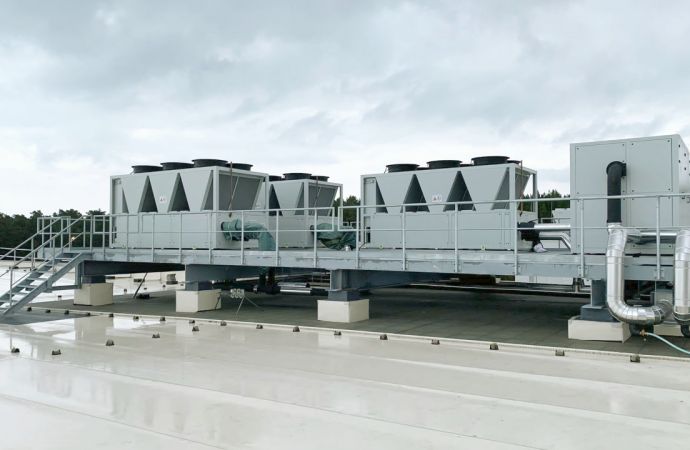Export association Asocolflores replaces R22-based system with R290 in a cold storage facility for flowers, achieving energy savings of 20%.

Asocolflores, the association representing flower exporters in Colombia, has replaced an R22-based system with R290 in a cold storage facility for flowers, achieving energy savings of 20%.
Asocolflores used to cool their cold rooms in the Savanna of Bogota with HCFC R22. Seeking to minimise their environmental impact while maintaining high product quality, they converted their cold room for post-harvest processing to R290.
The Colombian flower industry requires about 31.1 million kW of cooling capacity. 99% of the installations use R22 and the other 1% are R134a, so there is huge potential to convert those to R290.”
– Angélica Antolínez, National Ozone Unit
General features of the cold storage facility:
- Dimensions: 10.85 x 10.96 x 3.3 m (392.4 m3)
- Installed heat load: 130,000 Btu/h (38 kW)
- 5HP and 7.5HP condensing units
- 4 evaporators (2 for each system)
- Independent electronic control boards
- 60 kg of R22 charge
The performance of the system was analyzed and results showed that R290 provides 10% less of cooling capacity, but increase the Coefficient of Performance (COP) and reduce energy consumption by at least 10%.
To address safety concerns such as system pressure and refrigerant flammability, Asocolfores put in place several measures:
- Study on R290 pressure requirements compared to the original system: Analysis showed the R290 works at pressures approximately 14% lower than R22 and therefore it is very unlikely that pressures will be higher than the maximum allowable.
- Evaluation under the European Directive of Pressure Equipment to see if old components were suitable with the converted system.
- Analysis on flammability based on the EN 378:2008 safety standard for refrigeration systems and a basic risk assessment under EN 1127-1:2011.
- Refrigeration charge and concentration level in the cold room. Assuming a 10kg charge of R290, the maximum concentration level would be 25g/m3. The high charge is acceptable because the room is only accessible to authorised staff.
- Technicians were trained to safely handle hydrocarbons.
In converting the system, technicians ensured that electrical and refrigeration systems complied with existing regulation in order to eliminate risks associated with refrigerant flammability and changing the compressors to Bitzer semi-hermetic compressors suitable for hydrocarbons.
The system conversion delivered energy savings of 20%. The following table compares system performance:
Source: Ministry of Environment and Sustainable Development, 2016 Report
Despite the success of the project, Asocolflores encountered challenges during implementation such as a lack of standards and funding mechanisms, a shortage of qualified technicians and difficulties finding local equipment and component suppliers working with R290.
Related stories


_1635407946.jpg)
